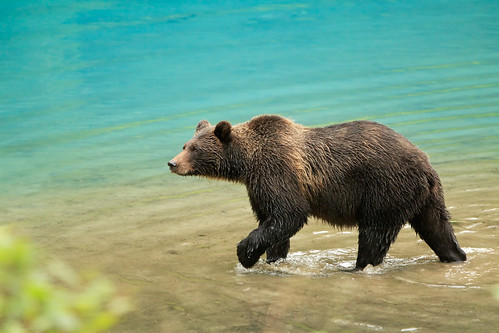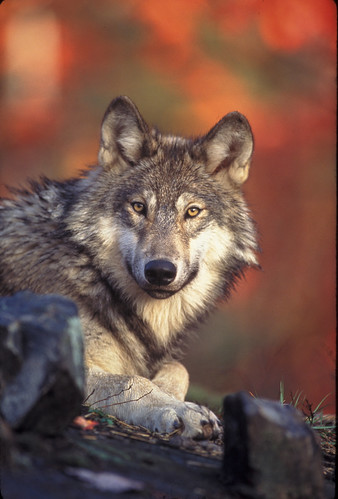https://www.google.com/url?rct=j&sa=t&url=http://www.dailyherald.com/article/20160513/news/305139900/&ct=ga&cd=CAEYASoUMTUzNTA5MjcxODIwODc3MTEzNTAyGmU3OWU0ODU4MjYwNGNkZDU6Y29tOmVuOlVT&usg=AFQjCNGSWQtT2FwO-JujeVI4b7X4FSNVgw
Indiana considers bobcat hunting, trapping to manage species
INDIANAPOLIS -- Indiana could soon add bobcats to the list of animals that are allowed to be hunted in some parts of the state.
The state Department of Natural Resources is considering removing bobcats from Indiana's list of protected species to allow for hunting and trapping in southwestern Indiana because of a recent surge in population. The growth would be managed appropriately by enforcing limits for individuals and a statewide quota, officials said.
Currently, the species' numbers only decrease when bobcats die in accidental kills, such as car accidents, or of old age, said Sgt. Paul Axton with DNR's District 7 in southwest Indiana.
"The bobcat population is on the increase, and they're on the top of the food chain," Axton said
In Indiana, bobcats became an endangered species in 1969, and then a protected species in 2005.
Because the proposal is in the informational stage, many details still need to be worked out, said Scott Johnson, wildlife science program manager. The department will collect feedback on the idea until May 15 and will consider the comments over the summer before making a decision, The Indianapolis Star (http://indy.st/1TSGDUS ) reported.
Erin Huang, Indiana director for Humane Society of the United States, said setting a sustainable quota for hunting season would be challenging because it's difficult to track the exact number of bobcats.
"This is a species that has been protected since 1969 since they were nearly (destroyed) from the state due to overhunting," Huang said. "They're elusive, shy creatures. I don't know if there's really any reason for it."
Jimmy Durako, who frequently hunts in southern Indiana and owns a hunting lights store in Lafayette, said a large bobcat population means less food for the species, which could cause them to venture into someone's yard and eat a pet or livestock.
Law enforcement officials in southern Indiana said they often hear about bobcat sightings, but they haven't experienced any issues beyond car crashes.
----------------------------------------------------------------------------------------
Why Fish and Game
Agencies Can’t
Manage Predators
Persecution and Limited Acceptance of Predators’ Ecological Role is Still the Dominant Attitude
In the past month or so, helicopters with gunners skimmed over the Alaskan tundra and forests shooting wolves to "protect" caribou herds. In Nevada, the state fish and game agency wants to kill more mountain lions to increase mule deer numbers. In Idaho, the state wildlife officials want to kill more than a hundred wolves in the Lolo Pass area to benefit elk.
 Photo by Alan VernonAlaskan Coastal Brown bear near Hyder, Alaska.Predators like bears, wolves, and
Photo by Alan VernonAlaskan Coastal Brown bear near Hyder, Alaska.Predators like bears, wolves, andmountain lions help reduce herbivore numbers which in turn reduces overgrazing.
Without exception, state game and fish agencies do not treat predators like other wildlife. Even though state agencies are no longer engaged in outright extermination of predators, persecution and limited acceptance of the ecological role of predators is still the dominant attitude. State wildlife agencies only tolerate predators as long as they are not permitted to play a meaningful ecological role — which at times means they may reduce prey numbers.
Top Predators Are Not Just Like Other Wildlife
With the delisting of wolves by Interior Secretary Ken Salazar, several states are poised to begin managing wolves. Proponents of wolf control suggest that wildlife agencies should manage predators "just like other wildlife".
The problem is that top predators are not just like other wildlife. Indeed, they play a crucial top down regulatory ecological role in maintaining ecosystem stability and integrity. In addition, predators, more than most other species, have well developed social structures that demand a much more nuanced approach to human-wildlife relationships than most wildlife agencies are prepared to deal with, much less even acknowledge.
Ecological Value of Predators
 Photo Gary Kramer/USFWSThe gray wolf has been taken off the endangered-species list
Photo Gary Kramer/USFWSThe gray wolf has been taken off the endangered-species listacross most of the northern Rockies.
Research has demonstrated substantive differences in the animals selected by predators compared to human hunters. In general, hunters take animals in the prime of life, while predators disproportionally take out the older, younger or less fit individuals.
As top-down regulators of ecosystems, predators like wolves, mountain lions, and bears help reduce herbivore numbers which, in turn, reduces overgrazing. Perhaps more importantly, predators shift how prey animals use their habitat. For instance, it is well documented that the presence of wolves in Yellowstone has changed how elk use the landscape, with less browsing on riparian vegetation as one consequence. The riparian vegetation is important because it holds stream and river banks together, reducing erosion, and increasing trout habitat. Beaver rely on the streambank willows for food and songbird species nest in such habitat.
Some scientists even postulate that wolves may ameliorate the effects of climate change on scavenger species by providing carrion throughout the year. Predators can also help limit the effects of diseases, like chronic wasting disease found in elk, deer, and moose since infected animals are more vulnerable to predators.
The presence of a large predator has a cascading effect on all other predators as well. For instance, the presence of wolves results in fewer coyotes. Since coyotes are among the major predators on pronghorn fawns, presence of wolves has led to higher pronghorn fawn survival in some areas.
In certain circumstances, top predators like wolves, bears, and mountain lions will hold prey populations low for an extended period of time, especially if habitat quality is marginal for the herbivores. These "predator sinks"; provide the long term “rest” from herbivory pressure that plant communities may require in overgrazed areas.
Unfortunately when predators begin to "hold down" prey populations, state agencies want to kill them so the targeted populations of moose, caribou, elk, or deer can “recover.” That is the justification, for instance, for the proposed slaughter of approximately 100 wolves near Lolo Pass by the Idaho Fish and Game department.
Social Interactions
I won't dwell on it much here, but top predators have sophisticated social interactions that state wildlife agencies completely ignore in their management. For the most part, state agencies' management of predators is based on numbers. If there are enough wolves or mountain lions to maintain a population, and they are not in any danger of extinction, than management is considered to be adequate.
The problem is that top predators have many social interactions that complicate such crude management by the numbers. For instance, predator control can shift the age structure of predator populations to younger animals. Since younger animals are less experienced hunters, they are more likely to attack livestock than older, mature predators. Animals in heavily exploited populations also breed earlier and have more young — increasing the demands for prey.
In other words, predator control and/or reduction activities may actually increase conflicts between predators and humans.
In other words, predator control and/or reduction activities may actually increase conflicts between predators and humans.
Why State Wildlife Agencies Have Failed to Protect Big Wildlife
It is my experience that most agency biologists are concerned about ecological integrity and would manage wildlife with a greater attention to ecological integrity if given a chance. There are many fine biologists working for state agencies. However, they are impeded by politically appointed wildlife commissions. While criteria for appointments vary from state to state, in general, commissioners are selected to represent primarily rural residents, timber companies and agricultural interests — all of whom are typically hostile to predators.
The other reason state agencies tend to be less enthusiastic supporters of predators has to do with funding. State wildlife agencies "dance with the one that brung ya"; These agencies are largely funded by hunter license fees and taxes on hunting equipment, rather than general taxpayer support. This creates a direct conflict of interest when it comes to managing species that eat the animals hunters want to kill. Agency personnel know that the more deer, elk, and other huntable species that exist, the more tags and licenses they can sell. What bureaucracy is going to voluntarily give up its funding opportunities for "ecological integrity"?
Some agencies grudgingly admit there is some ecological and aesthetic value in maintaining predator populations, but few are willing to promote predators or consider their ecological value.
Do We Need to Manage Predators?
With the exception of killing predators in the few instances where human safety is jeopardized as with human habituated animals, or to protect a small population of some endangered species, I find little good scientific support for the need for any predator management. Predator populations will not grow indefinitely. They are ultimately limited by their prey. Leaving predators to self-regulate seems to be the best management option available. For more details on this, read my new reporton predator management that was commissioned by Big Wildlife, an Earth Island Institute project.
In general, predators have minimum effect on hunting. Even now, in Wyoming, Montana, and Idaho, most elk populations are at or above "management objectives". Climatic conditions and habitat quality typically have a far greater impact on long-term viability of huntable species than predators.
In my view, we need to do more than restore token populations of wolves to a few wildernesses and park sanctuaries; we ought to be striving to restore the ecological role of top predators to as much as of the landscape as reasonably possible.
While we may never tolerate or want mountain lions or wolves in Cheyenne, Bozeman, or Boise city limits, there is no reason we can’t have far larger and more widely distributed predator populations across much of the West, as well as the rest of the nation.
But this will never happen as long as state wildlife agencies consider satisfying hunter expectations as their primary role, rather than managing wildlife for the benefit of ecosystem integrity.
But this will never happen as long as state wildlife agencies consider satisfying hunter expectations as their primary role, rather than managing wildlife for the benefit of ecosystem integrity.
George Wuerthner has a degree in wildlife biology from the University of Montana. He is a former hunting guide and ecologist.


 Photo by
Photo by 








No comments:
Post a Comment